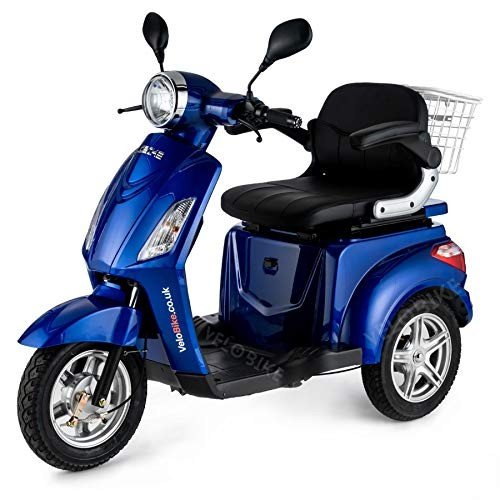20 Trailblazers Lead The Way In Mobility Scooters

Navigating the World of Mobility Scooters: A Comprehensive Guide
In an age where mobility is progressively recognized as an essential aspect of lifestyle, the need for assistive devices has actually surged. Among these, mobility scooters stick out as a flexible and empowering option for individuals with mobility challenges. This detailed guide looks into the world of mobility scooters, providing insights into their types, benefits, buying factors to consider, and upkeep suggestions.
Understanding Mobility Scooters
Mobility scooters are motorized lorries developed to help individuals with mobility problems in moving more freely and individually. They are particularly helpful for those who discover strolling hard due to conditions such as arthritis, several sclerosis, or post-surgical healing. Unlike manual wheelchairs, mobility scooters require minimal physical effort, making them an exceptional option for extended usage.
Types of Mobility Scooters
Three-Wheel Scooters
- Pros: More maneuverable, lighter, and much easier to store.
- Cons: Less stable on rough terrain.
- Best For: Indoor and smooth outside surfaces.
Four-Wheel Scooters
- Pros: More stable, better on rough terrain, and can bring heavier loads.
- Cons: Bulkier and less maneuverable.
- Best For: Outdoor usage, particularly in parks and on unequal surface areas.
Portable Scooters
- Pros: Lightweight, foldable, and simple to transport.
- Cons: Limited variety and speed.
- Best For: Travel and periodic use.
Sturdy Scooters
- Pros: Built to deal with much heavier users and rugged environments.
- Cons: More pricey and less portable.
- Best For: Users over 300 pounds or those who require to browse rough surface.
Standing Scooters
- Pros: Provide a standing position, which can be advantageous for users who can not sit for long durations.
- Cons: Limited stability and range.
- Best For: Users who prefer standing and require short-distance support.
Benefits of Mobility Scooters
Improved Independence
- Mobility scooters enable users to take a trip longer distances without tiredness, enabling them to take part more completely in day-to-day activities and gatherings.
Improved Safety
- With functions like safety belt, anti-tip wheels, and brake systems, mobility scooters use a safer option to manual wheelchairs and walking help.
Convenience and Support
- Adjustable seats, backrests, and armrests ensure a comfortable ride, reducing the pressure on the user's body.
Cost-Effective
- While the initial financial investment can be significant, mobility scooters are frequently more cost-effective in the long run compared to regular taxi rides or specialized transportation services.
Social Inclusion
- Mobility scooters assist in greater social interaction by enabling users to engage in neighborhood activities and maintain a more active lifestyle.
Aspects to Consider When Buying a Mobility Scooter
User Needs and Abilities
- Examine the user's physical condition, mobility requirements, and everyday activities to figure out the most suitable kind of scooter.
Size and Weight Capacity
- Guarantee the scooter can accommodate the user's size and weight easily and safely.
Range and Speed
- Consider the typical range and speed needed for daily usage. Some scooters have a variety of approximately 30 miles on a single charge.
Mobility
- If travel is a priority, decide for a portable scooter that can be quickly dismantled and transported.
Maintenance and Support
- Pick a trustworthy producer that uses trusted customer care and upkeep assistance.
Budget plan
- Set a budget plan and check out alternatives that offer the best value for cash. Think about financing alternatives and possible insurance coverage.
Upkeep Tips for Mobility Scooters
Routine Cleaning
- Tidy the scooter routinely to avoid dirt and particles from affecting its efficiency. Utilize a soft cloth and moderate detergent.
Battery Maintenance
- Follow the manufacturer's guidelines for battery charging and upkeep. Frequently examine the battery level and avoid deep discharges.
Tire Inspection
- Inspect the tires for wear and proper inflation. Change or fix as needed to guarantee a smooth and safe trip.
Lubrication
- Lube moving parts such as the chain and gears to decrease friction and prevent wear.
Professional Servicing
- Arrange routine expert maintenance to address any issues and make sure the scooter remains in optimal condition.
Frequently Asked Questions About Mobility Scooters
Are mobility scooters covered by insurance coverage?
- Some insurance strategies, including Medicare, might cover the expense of mobility scooters under certain conditions. Consult your supplier for specific information.
Can I use a mobility scooter inside?
- Yes, numerous mobility scooters are developed for both indoor and outside usage. Ensure the scooter is ideal for the kind of surfaces you will be navigating.
How quick can mobility scooters go?
- The speed varies by model, but a lot of mobility scooters have an optimal speed of 4 to 8 miles per hour.
Do I require a license to run a mobility scooter?
- In many countries, a license is not required to run a mobility scooter. However, it is essential to follow local guidelines and traffic laws.
Can I take a trip with a mobility scooter?
- Lots of mobility scooters are developed to be portable and can be taken apart for travel. Talk to airline companies and transportation service providers for particular requirements.
Mobility scooters are a transformative tool for people with mobility challenges, offering a mix of self-reliance, safety, and comfort. By understanding the different kinds of scooters, considering key acquiring aspects, and following maintenance best practices, users can maximize their mobility scooter and lead a more active and satisfying life. Whether for recommended site commutes or leisurely outings, a well-chosen mobility scooter can be a valuable buddy on the journey to enhanced mobility and lifestyle.

